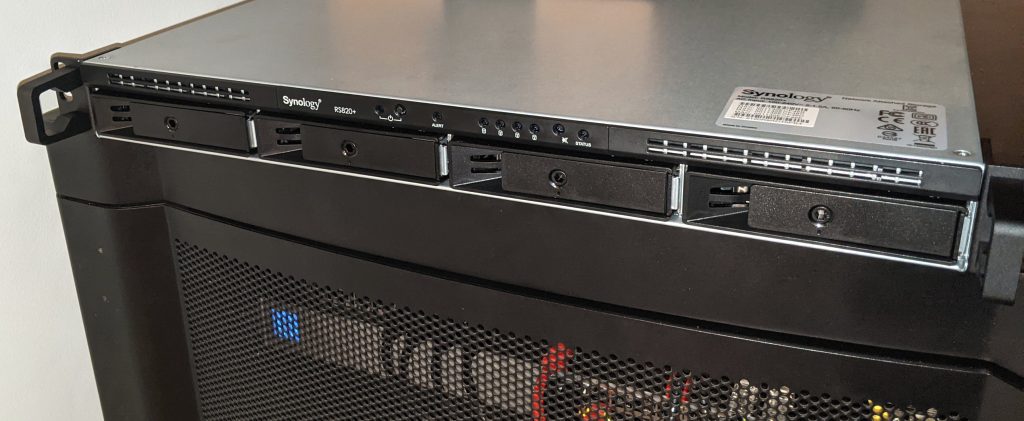
Dedicated NAS Backup
Synology RS820+
Recently, I have started to get more sentimental. With big milestones going on in my own life, and the lives around me, I want to retain some of the pictures we take beyond the short lifetime of this generation of phone.
In our grandparents day, memories were preserved in crates of photos, slides, and video. Now, we rely on uploading our curated lives to social media monopolies who have yet to stand the test of time. These giants inspire no confidence in me that my memories will be preserved for my kids or grandkids. I wanted a reliable place that I could send all of my pictures, videos, documents, and even server backups. Enter the Synology.
To the average person, it probably looks just like another black box with blinking lights, but to me, it’s a big deal. This server is a low-power device that I can configure with up to four hard drives, and it allows me to store as many files as I need. The most important function it provides is charging-enabled downloading. Whenever I charge my phone, the server downloads all of my photos and videos that I have taken and saves them locally. Liz’s phone is also set up this way. This means that we get all of the photos that we intend to keep, and all of the bad ones too. Sometimes looking through old photos, the bad pictures bring back the best memories and the most laughs.
A Simple Interface
As someone who has grown accustomed to the Command Line Interface (a way to interact with a computer only using text) the Synology is a breath of fresh air. This server has a special operating system called DSM. When I want to log in to the server, I open a web browser on any computer in my local network, and I get this display:
Essentially, DSM creates a virtual desktop interface, similar to what you might encounter with Windows, or more accurately, XFCE. On this interface, I have quick access to all applications, statistics, and most administrative functions.
Room to Grow
Currently, I only have three drives installed. After buying the device, I have to save up some money for drives to populate it. There were three drives that I had laying around unused that I installed to get the server running, but these are not the plan. I plan to install four Seagate IronWolf Pro, or EXOS drives, of at least 6 TB per drive. This will give me the storage that I need to migrate all of my backups from the other server, and ensure that my memories are preserved through the next two generations.
This was an expensive, but very welcome addition to my homelab environment. I am excited to watch my collection grow.